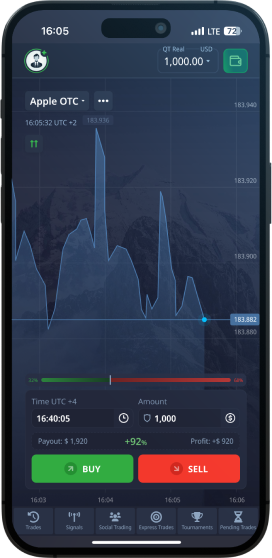
Unlocking the Potential of Pocket Option Signals
In the world of online trading, every trader seeks an edge that can lead to profitable outcomes. One of the most effective tools for achieving this is utilizing trading signals. Particularly,
Pocket Option Signals sinais para Pocket Option provide traders with critical information that can help in making informed trading decisions. In this article, we will explore what Pocket Option signals are, how to utilize them effectively, and tips for maximizing your trading success.
What Are Pocket Option Signals?
Pocket Option signals are indicators or alerts that suggest when to enter or exit a trade. They are typically generated through various forms of analysis, including technical indicators, market sentiment, and price action patterns. Traders can choose to follow these signals to enhance their trading strategy and make decisions based on data rather than emotions.
Types of Trading Signals
There are several types of signals available to traders on Pocket Option:
- Technical Signals: These are based on chart patterns and price movements. Indicators such as Moving Averages, Relative Strength Index (RSI), and Bollinger Bands are commonly used to generate signals.
- Fundamental Signals: These arise from economic news releases, earnings reports, and other fundamental data that may impact asset prices.
- Sentiment Signals: These derive from the overall mood of the market, typically measured by the positioning of retail traders.
How to Use Pocket Option Signals Effectively

Using Pocket Option signals is not as simple as following buy/sell alerts blindly. Here are some essential tips to utilize them more effectively:
- Do Your Own Analysis: Always consider performing your own analysis alongside the signals you receive. This can involve checking trends on your charts and understanding market conditions.
- Backtest the Signals: Before committing significant capital to trades based on signals, consider backtesting them to see how they would have performed in the past.
- Risk Management: Use proper risk management techniques, such as stop-loss orders, to protect your trading capital. No matter how reliable a signal may be, it’s crucial to manage your risk.
- Stay Informed: Keep an eye on economic events and news that may affect the markets. This knowledge can help contextualize the signals and align your trades with the prevailing market conditions.
Choosing Reliable Signal Providers
Not all signal providers are created equal. When looking for reliable Pocket Option signals, consider the following criteria:
- Track Record: Look for providers that can demonstrate a history of successful predictions. Transparency is key.
- Analytical Approach: Understand the methodology behind the signals. A provider using a sound analytical approach is likelier to give you accurate signals.
- Community and Support: A strong community and customer support can be extremely helpful. You can gain insights from other members and get assistance when needed.
Common Mistakes to Avoid
Here are a few mistakes traders often make when using signals and how to avoid them:
- Overtrading: Following every signal without a proper strategy can lead to losses. Focus on your trading plan and stick to it.
- Ignoring Market Conditions: Signals might suggest a trade, but external factors could render it less effective. Always consider the broader market context.
- Disregarding Emotional Discipline: Emotions can cloud judgment. Set strict rules on how to trade based on signals and stick to them regardless of market fluctuations.
Conclusion
Utilizing Pocket Option signals can undoubtedly enhance your trading game if approached correctly. By taking the time to analyze the market, choosing reliable signal providers, and staying disciplined, you can significantly increase your chances of trading success. Remember, signals are a tool, not a guarantee. Your goal should be to integrate them into your broader trading strategy for maximum benefit.